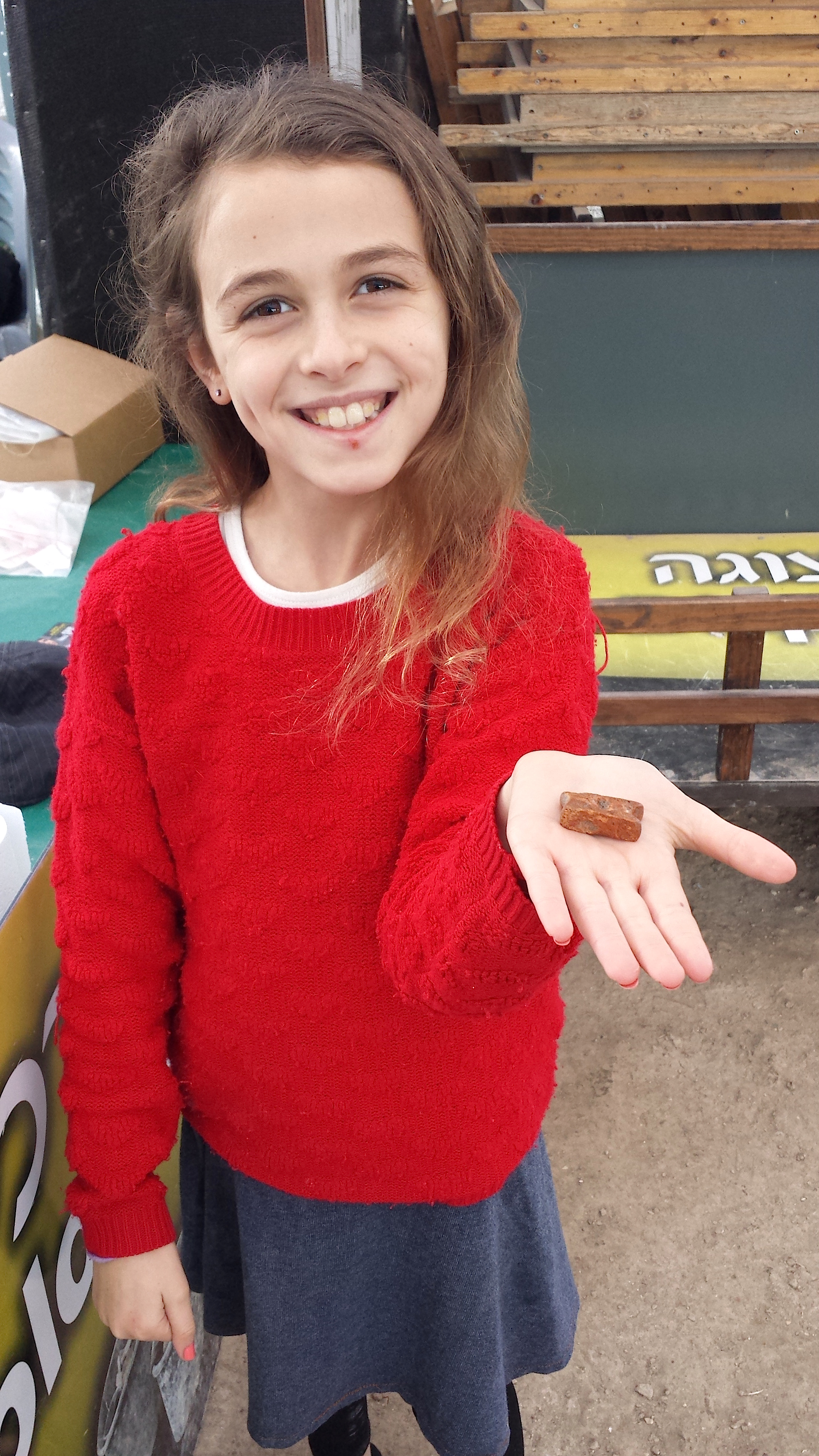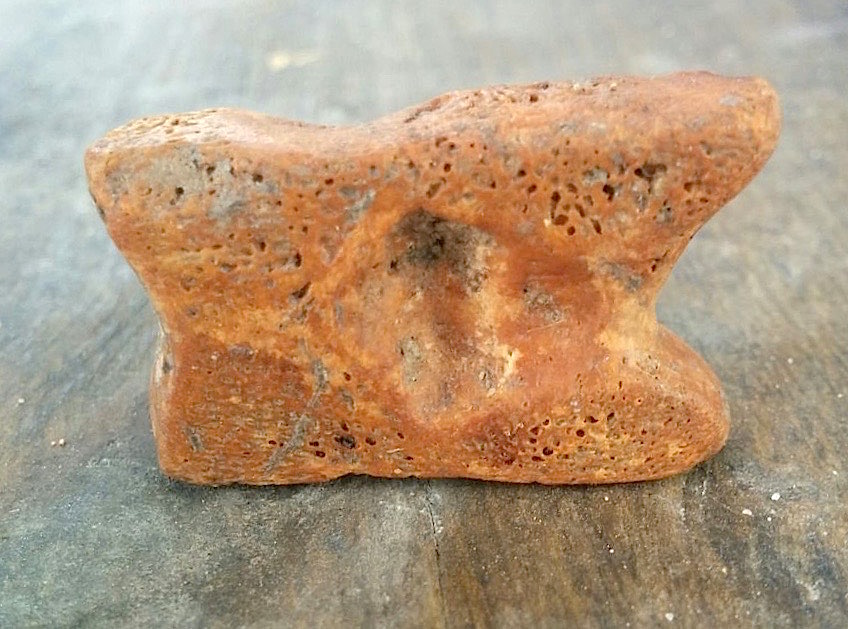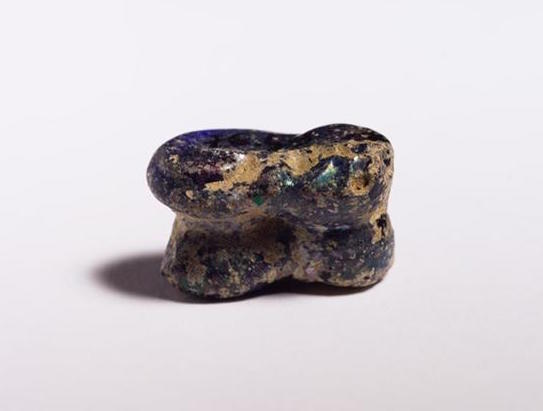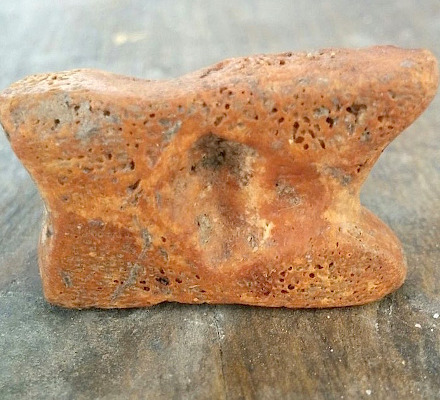Find of the Month: It’s All Fun and Games! – Bar Yosef Family
Find of the Month: December

Alumah, age 10, holding an astragolos
Over Chanukkah, we had 1356 people come and sift with us! Out of the thousands of amazing finds recovered in the last week and the last month, our find of the month is this fantastic astragolos also commonly known as a game piece from the game of Knucklebones (though it isn’t the knuckles but rather the anklebones from the hind legs of sheep and goats that are used to play this game of chance). This artifact was found by the Bar Yosef family from Eli and seems to be the perfect fit for this fun-loving family! See Alumah, age 10, holding the astragolos found by her family.
The origin of Knucklebones is probably a more primitive form of dice. Sophocles ascribed the invention of knucklebones to Palamedes, who taught it to the Greeks during the Trojan War. It became one of the most popular games of chance in antiquity. The knucklebones, or astragaloi, were used like fivestones, dice, or jacks. The game is played with five small objects (10 with jacks) that were thrown in the air and caught in various ways such as on the back of the hand. Many have been found in funerary contexts and may have been intended to help the deceased entertain themselves through eternity.

Bone astragolos found by the Bar Yosef family in the sifting
Today, variations of this game with specific rules and combinations of throws and catches are still played in different contexts across the world. Here in Israel, children play “Chamesh Avanim,” which is similar in concept but played with small metal dice or cubes. (This archaeologist can admit that her nieces always beat her).
Sometimes these game pieces were also made out of glass, bronze, stone, and terracotta, or had a hole and were used as a bead. Most astragaloi come from Hellenistic or Roman contexts. In October, while sorting through a collection of bones found the day before, one of our staff noticed that one of the bones looked like it was made of glass. He had found a glass astragolos! Though there have been many glass astragaloi discovered in Greece, its dependents, and the Eastern Mediterranean, they are rare here in Israel. A few have been found in Samaria, Maresha, Dor, and Jaffa. Unless others are unpublished, this was the first glass astragaloi found in Jerusalem. More research will determine the significance of this find and refine its dating, so stay tuned for a future article about this.

Glass astragolos from the Eretz Israel Museum in Tel Aviv that is like the one found by the Sifting Project.
Discover more from The Temple Mount Sifting Project
Subscribe to get the latest posts sent to your email.












Reblogged this on Kattukse Vrienden voor Israël.
boy, whom ever lost those glass game pieces was probably very frustrated! I know I would be!!
great publish, very informative. I’m wondering why the opposite specialists of this sector do not understand this. You must continue your writing. I am confident, you’ve a great readers’ base already!